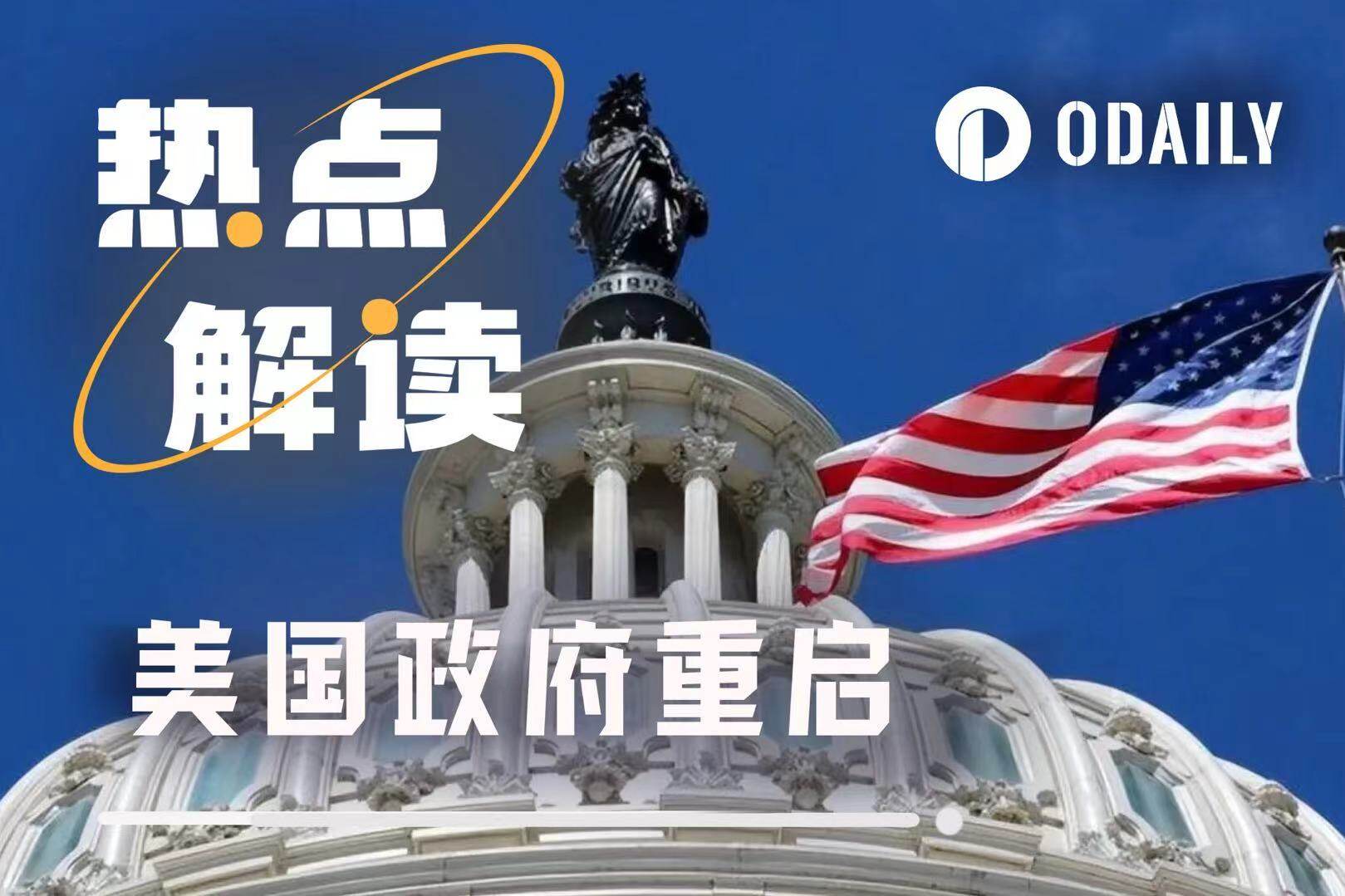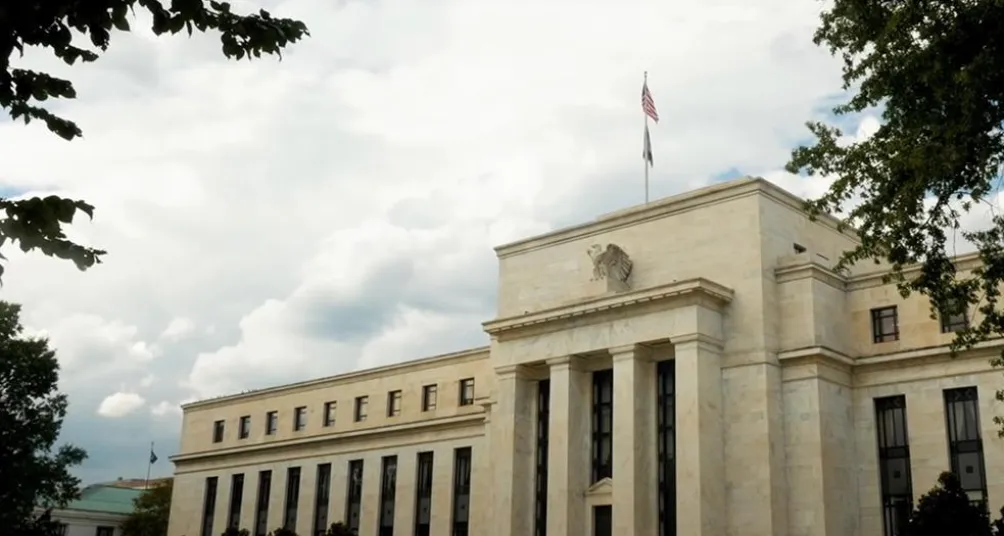Original | Odaily Planet Daily (@OdailyChina)
The 43-day shutdown of the U.S. federal government has finally ended today.
On November 13, the House of Representatives passed a temporary funding bill with a vote of 222 to 209, and Trump signed the temporary funding bill on the morning of the 13th. This bill will provide funding for food assistance programs that were cut off during the shutdown, retroactively pay wages to hundreds of thousands of federal employees, and restore normal operations of the air traffic control system. The White House also stated that the labor statistics data for September will be released after the government reopens, but the key economic report for October may not be released at all.
Everything is getting back on track, but the market does not seem to have welcomed the government restart with a strong rebound—BTC briefly fell below $101,000 again early this morning, and the overall market is declining. Besides the improvement in the macro environment, the crypto market seems to need more stimulating factors to bring stronger upward momentum.
Why did the U.S. government shut down for 43 days?
Historically, there have been 21 government shutdowns in the U.S. since 1976, but the shutdown that began on October 1, 2025, broke the previous record of the longest shutdown at 35 days.
This record-breaking shutdown stemmed from the failure of Republicans and Democrats to reach an agreement on a new fiscal budget in October. The main disagreement over the budget was regarding a healthcare expenditure, with Democrats demanding an extension of the soon-to-expire tax credits to allow millions of Americans to continue enjoying lower health insurance costs, while Republicans insisted on cutting health and government healthcare-related expenditures to control the budget size.
Although the House passed a temporary funding bill to avoid a government shutdown, Democrats in the Senate engaged in a prolonged standoff, ultimately leading to the government officially shutting down on October 1. However, even though the temporary funding bill has now passed, the two parties are still arguing over federal healthcare subsidies, and the Democrats have failed to achieve their goal of extending federal healthcare subsidies.
The core contradiction of this dispute remains unresolved.
Different performances of the U.S. stock market and crypto market during the government shutdown
The U.S. government shutdown not only affected the daily lives of Americans but also impacted the wallets of global investors. The market believed that the government shutdown would bring negative effects to the market.
Firstly, the government shutdown caused economic departments like the Labor Department to cease normal operations, preventing the timely release of important economic data such as CPI and non-farm payroll reports, which left the Federal Reserve's decision-making "blind" and cast a shadow over the market.
Secondly, the government shutdown also drained market liquidity. The U.S. Treasury General Account (TGA) is responsible for all government expenditures, not only paying U.S. civil servant salaries but also injecting liquidity into the financial market. The government shutdown caused the TGA to only take in funds without any outflows. According to MacroMicro data, during the government shutdown, the TGA accumulated over $1.459 trillion, with a current balance of $965.3 billion.

However, TradingView data shows that during the government shutdown (from October 1 to November 13), the three major U.S. stock indices did not experience significant declines; instead, they rose, with the Dow Jones up 3.5%, the S&P 500 up 3%, and the Nasdaq up 2.9%. Gold rose over 8.5% during the government shutdown and reached a new high of $4,355 on October 22.
The crypto market, on the other hand, did not disappoint expectations and took a significant hit. On October 11, the crypto market experienced a "1011" crash, creating a record of over $19.1 billion in liquidations in a single day, with Bitcoin even falling below $99,000. Although the market saw some recovery after the "1011" crash, it remained sluggish overall. During the government shutdown (from October 1 to November 13), BTC fell by a cumulative 14%, ETH by 20%, SOL by 30%, and BNB by 6.67%.
It can be seen that the negative impact of the U.S. government shutdown on the global market was not as significant as imagined. The decline in the crypto market during this period was the result of multiple factors, such as continuous outflows from spot Bitcoin ETFs, a retreat in DAT, weakened expectations for Fed rate cuts, and internal crises within the crypto industry.
The market may have overestimated the impact of the U.S. government restart
Since the U.S. government shutdown is just a minor influencing factor in the fluctuations of the global market, investors may have overestimated the impact of the government restart on the market.
U.S. stocks closed on Wednesday with high expectations for a Senate vote and the government restart, but only the Dow Jones rose by 0.78%, the S&P 500 saw a slight increase, while the Nasdaq fell by 0.26%; the crypto market still did not rebound from its downturn, with BTC down 1.04% on the daily chart, indicating that the government restart is not a "positive" for the crypto market.
Historically, a blogger @BunnyTalks_ summarized a pattern: during the major government shutdowns in 1995-1996, 2013, and 2018-2019, although the stock market was lukewarm during the shutdowns, it would rise after the shutdown ended. Whether this pattern will hold true again remains to be seen in tonight's stock market opening performance.
For the crypto market, there is no established pattern of "必涨" (must rise) after a government restart. Statistics show that since Bitcoin was officially assigned a price by the market, the U.S. government has shut down three times.
- October 1-17, 2013: The government shut down for 16 days due to the Obamacare controversy, and there was no significant change in Bitcoin's price within a month after the government restarted;
- January 20-22, 2018: The government shut down for 2 days due to Trump's immigration policy controversy, and Bitcoin's price fell below $10,000 within a month after the government restarted;
- December 22, 2018 - January 25, 2019: The government shut down for 35 days due to Trump's border wall controversy, and there was no significant change in Bitcoin's price within a month after the government restarted.
In summary, past government shutdowns and restarts have had little impact on Bitcoin and the crypto market, and we should not have overly high expectations for its ability to boost the market. The significant drop in Bitcoin in early 2018 was also primarily due to the aftermath of the "94" incident, leading the crypto market into a deep bear phase.
Moreover, the impact of the "1011" crash on the crypto industry is gradually becoming apparent, with liquidity nearing exhaustion, DeFi crises, and structural buying support from ETFs and DAT being withdrawn. These factors are suppressing the upward momentum that the government restart could bring to Bitcoin.
However, some viewpoints suggest that the current crypto market is different from the past, especially as Bitcoin has become an "appendage" to the U.S. stock market, so macroeconomic positives may play a significant role. As the U.S. government resumes normal operations and the TGA begins to inject liquidity into the market, the previously suppressed hundreds of billions of dollars in fiscal spending will also flood into the market, potentially turning the crypto market around.
免责声明:本文章仅代表作者个人观点,不代表本平台的立场和观点。本文章仅供信息分享,不构成对任何人的任何投资建议。用户与作者之间的任何争议,与本平台无关。如网页中刊载的文章或图片涉及侵权,请提供相关的权利证明和身份证明发送邮件到support@aicoin.com,本平台相关工作人员将会进行核查。





